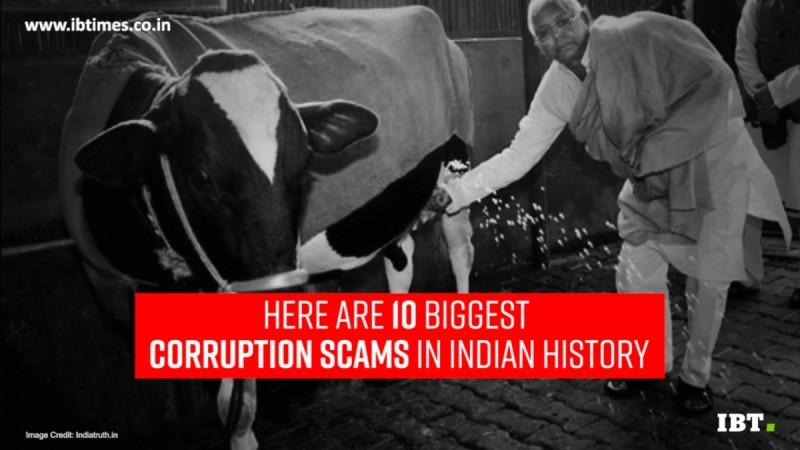
The latest report from Transparency International offers nothing for India to cheer. The world's largest democracy is deeply enmeshed in the primary bane of corruption. India's neighbours in the vice list are the badlands of Central Asia and Sub-Saharan Africa. In a list topped by New Zealand and Denmark, India is on the 81st position, and has slipped two positions from the previous year.
The Berlin-based anti-corruption watchdog ascribes numbers from 0 to 100 to the countries to reflect the level of corruption. India's score is 40 in the latest report, compared with 36 in 2012. India is far below countries like Senegal, Lesotho, Tunisia and Belarus. This timely reminder of India's corruption issue comes after the country witnessed the PNB scam, one of the worst white collar crimes in its history.
The Transparency study also brings out the link between corruption and journalist deaths. Citing data from the Committee to Protect Journalists (CPJ), the report says that more than 9 out of 10 journalists killed in the last six years were from countries that score 45 or less on the index. A separate check in the CPJ database shows that at least 15 journalists were killed in India in the same period. More alarming is the number of dead RTI activists in the last decade. As many as 69 activists and whistleblowers who were trying to expose corruption at various levels were killed in India since 2005.
Killing of journalists and RTI activists
The killing of journalists and RTI activists, and the high rate of corruption should be seen together. Despite being a modern democracy, why does India rank among the failed nations with weak systems? Or is it that the democratic institutions have been corrupted to the core? Is a too big, too decentralized government helping corruption cascade into various levels? What's the reason of very high levels of voluntary corruption in the country? Why do honest people end up paying bribes?
Are there too many laws that open up loopholes for power centres in government to engage in very high levels of rent-seeking? For a change, will simplifying rules help reduce corruption?
Transparency International's "People and Corruption: Asia Pacific" report in March 2017 showed that India recorded the highest bribery rate in the whole of Asia Pacific. Corruption in basic sectors like healthcare, policing and government in India was far worse than in Pakistan and China. While China is a rule-by diktat communist regime that freely gives capital punishment to the corrupt, Pakistan hasn't had much of credible democracy in its entire life.
More worryingly, the report said the the poor are disproportionately affected by rampant corruption. Corruption has left deep stain on almost every walk of Indian public life -- election to political office, stock markets, banking, mining, sports, health, telecom, education and even army procurement. But the most worrying part is that it's the poor who bear the brunt the most.
Studies show that as much as 73 percent of the total bribes are from the lower income and socially disadvantaged people. They are not in a position to peddle influence in lieu of bribe, and so they are left with no option but to pay money for almost everything - including for getting a postmortem done.
Large-scale impunity
Democracy gives the right to people to vote corrupt leaders out of power and thus prevent the cronies from looting the country. But how effective is this process? Are we rather alternating between two evils? Do we have real choice in this? Then comes the question of large-scale impunity. How many graft cases lead to convictions? Are the guilty in high places caught? Is there fear of getting exposed? Or is the complex web of laws and processes helping the corrupt escape punishment?
More importantly, have the anti-graft institutions met their goals? The Prevention of Corruption Act of 1947 has remained the basis of India's anti-corruption drive, but we have since then added various other institutions such as the CBI, the Comptroller and Auditor General of India, the Central Vigilance Commission and the People's Ombudsman. The enactment of the Right to Information Act (RTI) in 2005 was a significant landmark as well. Another big step was the Whislleblowers Protection Act and its later amendments.
The Transparency report places utmost emphasis on protecting whistleblowers. It states that journalists, activists and officials who expose graft are threatened and killed. "Philippines, India and the Maldives are among the worst regional offenders in this respect. These countries score high for corruption and have fewer press freedoms and higher numbers of journalist deaths," the report says.
The report says that as many as 15 journalists working on corruption stories were killed in these countries, citing statistics from the CPJ. India continues to be a highly risky place for those who expose corruption and political malpractices. Senior administrative and police officers have been killed, and even high-ranking judges chasing political corruption ave mysteriously died. No wonder we are in an ignominious jostle with the failed states and banana republics.















